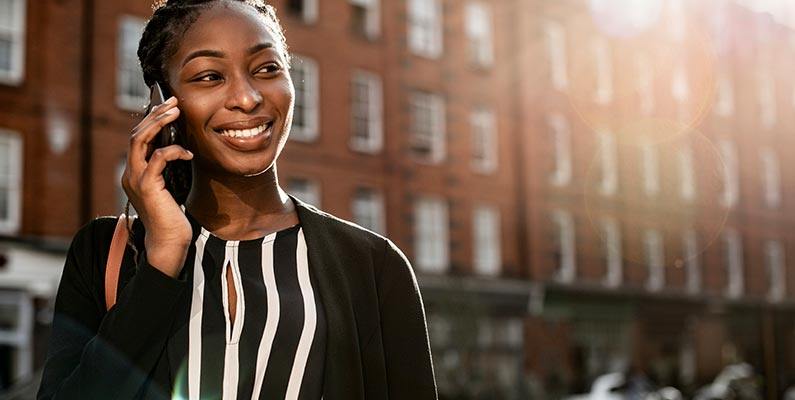Phobias Articles
Recent
Popular
Phobia translates to “fear.” However, a phobia is an extreme version of a fear where the person who is “phobic” is exceptionally terrified of a specific person, place, animal, object, or situation. For example, arachnophobia is the fear of spiders. Someone with a regular fear of spiders may not want them in the house or ask someone else to take them out. However, someone with a phobia of spiders may scream and cry if they see a spider and have nightmares about these animals after thinking of one.
Someone afraid of heights might be frightened of flying on an airplane. Someone with a phobia of heights may have panic attacks when on a high bridge or watching a video about a tower. Fears and phobias are related but are not the same. A person develops a phobia when their fear reaches a point that it causes significant dysregulation and avoidance, which may impact daily functioning and well-being.
The articles in this section focus on how fear can negatively impact one’s life and make it difficult to function. You can learn about unique phobias and ways to overcome these phobias with therapy, medication, lifestyle changes, and professional support.
More Phobias articles
Explore more on Phobias
Phobias are extreme fears that impact daily functioning. If you have a specific phobia, you may take drastic measures to avoid what you’re afraid of. People with phobias often understand their phobia is illogical but may continue to experience fear. They may be afraid of any specific topic, including but not limited to dying, spiders, the dark, or being alone. Phobias can cause so much emotional turmoil that they may impact every moment of one’s day. In these cases, mental health support from a therapist may be valuable.

Examples of phobias
Below are a few examples of types of specific phobias. The Diagnostic and Statistical Manual of Mental Disorders, Fifth Edition (DSM-5) lists all phobias under the “specific phobias” diagnosis. There are thousands of specific phobias, but all follow a similar pattern of fear and avoidance.
Nyctophobia
Nyctophobia is a phobia of the dark. This phobia goes beyond the usual “fear of the dark” children often experience. People with this phobia may experience sweating, hypervigilance, dry mouth, shaking, or panic attacks when in the dark, thinking about the dark, or watching dark videos.
Agoraphobia
In some cases, people become so fearful that they develop debilitating anxiety. A common phobia is agoraphobia. A person who is agoraphobic is afraid of being in public or crowded spaces and having panic attacks in front of others. They may worry about getting hurt in public or being embarrassed. They may also fear situations where they perceive they don’t have control over their environment. Agoraphobia is a separate diagnosis in the anxiety disorder category of the DSM-5 but is also considered a phobia. It can co-occur with social anxiety disorder.

Arachnophobia
Arachnophobia is the fear of spiders. People with arachnophobia have such a severe fear of spiders that they may have panic attacks when talking about them, looking at them, or witnessing videos of them. The idea of encountering a spider may cause someone with this phobia to experience phantom sensations of a spider on their body, which may cause further panic. This phobia is more than a traditional fear and can cause daily distress and actions like avoiding sleeping in specific locations or going outside.
Cynophobia
Cynophobia is a phobia of dogs. An individual with this fear may take extreme measures to avoid areas where dogs may be present. They may be afraid the dogs will harm them and could potentially have a traumatic past with dogs. For example, perhaps they were bit by a dog as a child. Some may have a phobia of dogs for no apparent reason, becoming extremely distressed when seeing them.
Panic attacks and phobias
People with phobias may get to the point where they have panic attacks induced by their fears. A panic attack is a sudden episode of intense dread that seems to come out of nowhere and can cause physical symptoms such as chest pain, shortness of breath, and tremors. If your phobia causes you to panic, you’re not alone. Talking to a therapist is one way to start treatment of this condition.

Support options
One of the most effective treatments for specific phobias is exposure and response prevention therapy (ERP), which can be done with a therapist trained in cognitive-behavioral therapy (CBT) and ERP techniques. However, some people with phobias may have so many avoidant behaviors that they struggle to reach out to an in-person therapist. In these cases, online therapy through a platform like BetterHelp may be beneficial.
Online therapy platforms allow clients to access support from a licensed mental health professional at home or any location with an internet connection. In addition, these platforms offer convenience and cost-effectiveness. Clients can choose between phone, video, or live chat sessions and access extra tools like group therapy or interactive worksheets.
Studies also back up the effectiveness of online therapy for phobias and anxiety. One review of nine studies found that online ERP for specific phobias could significantly reduce clients' anxiety symptoms and phobia behaviors.
Takeaway
Specific phobias are challenging mental health conditions that cause extreme anxiety, panic attacks, and avoidant behaviors in response to a particular stimulus. To learn more about how specific phobias function, consider reading the above articles or contacting a phobia specialist online or in your area for support.


